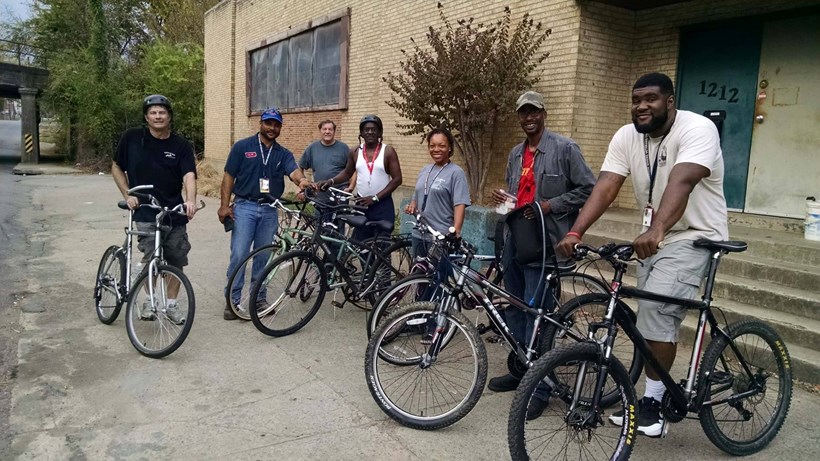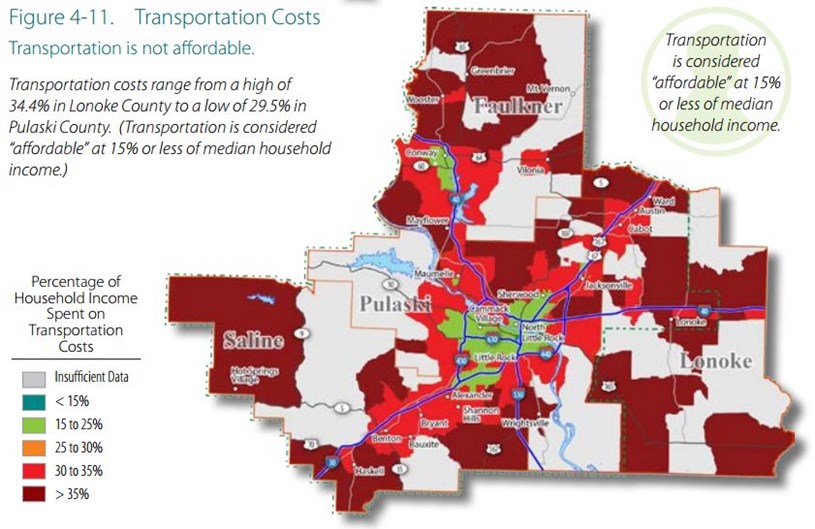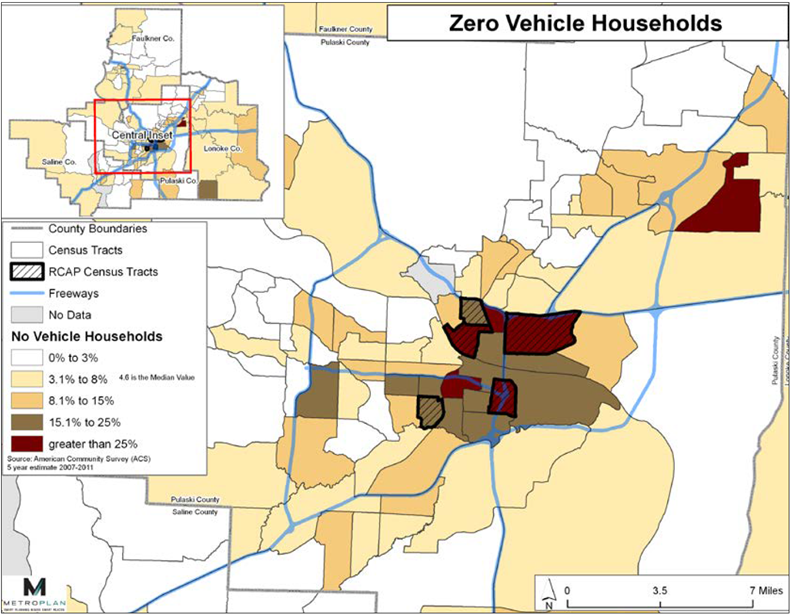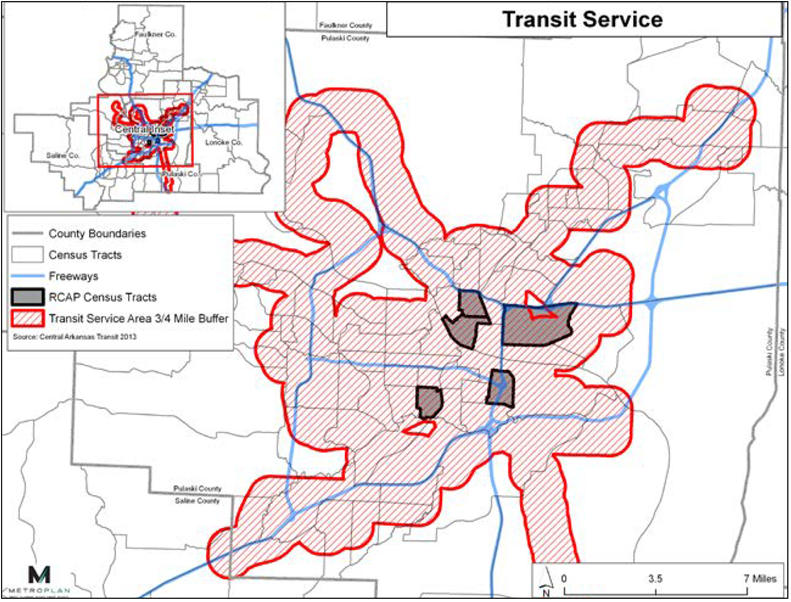Expanding Income Opportunities
A transportation system that accommodates bikes, pedestrians, and transit is not simply a feel-good luxury; it is essential to the safety and independence of many of Little Rock's residents. Some residents choose to make some or all of their trips car-free because of the many personal and societal benefits of alternative transportation, others do not have that choice. Many low- and middle-income residents and families depend on a transportation system accessible without a vehicle because they can't afford a car or enough cars to meet their transportation needs with vehicles alone. Failure to design for bikes, pedestrians, and transit will not cause these families to abandon their only means of mobility, it only makes their daily lives more dangerous (Fig. 1).

Figure 1. Some of the thousands of Little Rock residents served by Recycle Bikes for Kids annually. Photo by RBfK 11/4/16.
By the Numbers
Did you know that the cost of owning and operating a car for most Little Rock residents is over $10,000/year? Given Little Rock's median household income of $48,463/year and that 17.8% of residents live in poverty,it is no wonder that transportation is considered unaffordable throughout Little Rock (Fig. 2), that many households do not own a vehicle (Fig. 3), and areas of low vehicle ownership overlap with family poverty rate (Fig. 4). Transportation can be challenging even for households that own one car if more than one adult works, if children need transportation to school, etc. Making transportation alternatives safe and convenient helps many households balance their budgets without endangering their lives.

Figure 2. Transportation is not affordable almost anywhere in Little Rock or Central Arkansas (Imagine Central Arkansas, pg. 46).

Figure 3. 15% or more of households in much of Little Rock do not own a vehicle (Imagine Central Arkansas, pg. 56).

Figure 4. Areas of high poverty have low rates of vehicular ownership (Fig. 3, Imagine Central Arkansas, pg. 49).
Costs of Other Transportation Options
Transit: Rock Region Metro is becoming more convenient than ever with GPS-tracked buses and a smartphone app that allows users to track and anticipate bus and streetcar movements. Buying a monthly Rock Region Metro pass at $36/month (or less) comes to $432/year (or less). Rock Region Metro serves most of the City of Little Rock, assuming a 3/4 mile buffer from routes (Fig. 5).
Bike: The annual cost of owning and operating a bicycle is $308/year. If this is a financial burden, Little Rock/North Little Rock is home to Recycle Bikes for Kids, which provides bicycles to children free of charge and adults in exchange for three hours of service fixing up bikes for the next “customers”. Thanks to Recycle Bikes for Kids, owning and operating a bicycle in Little Rock can simply cost you a few hours of your time over the lifetime of the bike!
Pedestrian: Walking is effectively free but most realistic as a regular transportation option for short distances.

Figure 5. Rock Region Metro's system serves much of the City of Little Rock (Imagine Central Arkansas, pg. 55).
Alternative Transportation Interdependent
In practice, residents rarely use only one transportation alternative. Transportation choices vary, but generally, longer trips are taken by transit, medium-length trips are taken by bike, and short trips are walked. However, transit trips are themselves multimodal because buses rarely stop exactly at desired origins and destinations.
Note in Figure 3 that most of Little Rock is covered by transit, assuming a 3/4 mile buffer from routes. Even this is optimistic, given that bus stops occur infrequently along a bus route. Figure 4's optimism is stretched even further when data show that pedestrians are typically willing to walk 1/4 or 1/2 mile to access transit (stop).
In any case, a user must travel from an origin to a bus stop and from a bus stop to a destination, typically by bike or on foot. This "last mile" challenge is common for transit systems, but underscores the importance of bike and pedestrian connectivity for a functional transit system. The fact that our transit system either has many more coverage gaps than suggested by Figure 4 or we are asking users to bike or walk farther than users are typically willing to do so means we must have stronger bicycle and pedestrian connectivity than the typical city. In addition to a higher density of transit routes and stops, users will be willing to travel greater distances to access transit (and the transit system will be more viable and widely used) when coupled with more BikePed infrastructure, better quality BikePed infrastructure, and BikePed infrastructure that is better connected into a complete network connecting origins to destinations (Sections 5-7).




 Trash & Recycling
Trash & Recycling
 Online Payments
Online Payments
 City Documents
City Documents
 Parks
Parks
 Traffic Court
Traffic Court
 E-NEWS
E-NEWS
 EXPLORE
EXPLORE
 NEWS
NEWS
 TRANSLATE
TRANSLATE
